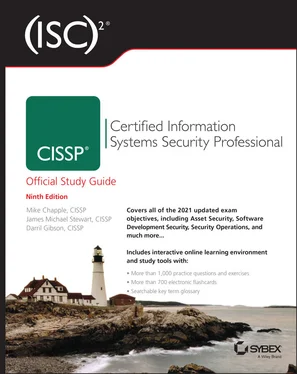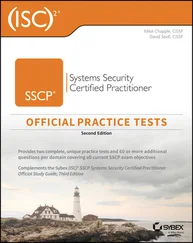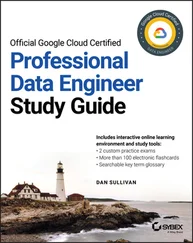Onboarding: Employment Agreements and Policies
Once a qualified but not-disqualified candidate is found and interviewed, they can be offered the job. If accepted, the new hire will need to be integrated into the organization. This process is known as onboarding.
Onboarding is the process of adding new employees to the organization, having them review and sign employment agreements and policies, be introduced to managers and coworkers, and be trained in employee operations and logistics. Onboarding can also include organizational socialization and orientation. This is the process by which new employees are trained in order to be properly prepared for performing their job responsibilities. It can include training, job skill acquisition, and behavioral adaptation in an effort to integrate employees efficiently into existing organizational culture, processes, and procedures. Well-designed onboarding can result in higher levels of job satisfaction, higher levels of productivity, faster integration with existing workers, a rise in organizational loyalty, stress reduction, and a decreased occurrence of resignation.
A new employee will be provided a computer/network user account. This is accomplished through the identity and access management (IAM) system of an organization, which will provision the account and assign necessary privileges and access. The onboarding process is also used when an employee's role or position changes or when that person is awarded additional levels of privilege or access.
To maintain security, access should be assigned according to the principle of least privilege. The principle of least privilege states that users should be granted the minimum amount of access necessary for them to complete their required work tasks or job responsibilities. True application of this principle requires low-level granular control over all resources and functions. Further discussion of least privilege is in Chapter 16, “Managing Security Operations.”
When a new employee is hired, they should sign an employment agreement. Such a document outlines the rules and restrictions of the organization, the security policy, details of the job description, violations and consequences, and the minimum or probationary length of time the position is to be filled by the employee. These items might be separate documents, such as an acceptable use policy (AUP). In such a case, the employment agreement is used to verify that the employment candidate has read and understood the associated documentation and signed their agreement to adhere to the necessary policies related to their prospective job position.
 An acceptable use policy (AUP) defines what is and what is not an acceptable activity, practice, or use for company equipment and resources. The AUP is specifically designed to assign security roles within the organization as well as prescribe the responsibilities tied to those roles. This policy defines a level of acceptable performance and expectation of behavior and activity. Failure to comply with the policy may result in job action warnings, penalties, or termination.
An acceptable use policy (AUP) defines what is and what is not an acceptable activity, practice, or use for company equipment and resources. The AUP is specifically designed to assign security roles within the organization as well as prescribe the responsibilities tied to those roles. This policy defines a level of acceptable performance and expectation of behavior and activity. Failure to comply with the policy may result in job action warnings, penalties, or termination.
In addition to employment agreements, there may be other security-related documentation that must be addressed. One common document is a nondisclosure agreement (NDA) . An NDA is used to protect the confidential information within an organization from being disclosed by a current or former employee. Violations of an NDA are often met with strict penalties. Throughout a worker's employment, they may be asked to sign additional NDAs as their job responsibilities change and they are needing to access new sensitive, proprietary, or confidential assets. When an employee leaves the organization, they should be reminded of their legal obligation to maintain silence on all items covered by any signed NDAs. In fact, they may be required to re-sign the NDA upon departure as a means to legally confirm that they are fully aware of their legally recognized obligation to maintain trade secrets and other confidential information.
Throughout the employment lifetime of personnel, managers should regularly review or audit the job descriptions, work tasks, privileges, and responsibilities for every staff member. It is common for work tasks and privileges to drift over time. Drifting job responsibilities or privilege creep can also result in security violations. Excess privileges held by a worker represent increased risk to the organization. That risk includes the greater chance for mistakes to damage asset confidentiality, integrity, and availability (CIA) outside of the worker's actual responsibilities, greater ability for a disgruntled worker to cause harm on purpose, and greater ability for an attack that takes over a worker's account to cause harm. Reviewing and then adjusting user capabilities to realign with the principle of least privilege is a risk reduction strategy.
For some organizations, mostly those in the financial industry, a key part of this review process is enforcing mandatory vacations. Mandatory vacations are used as a peer review process. This process requires a worker to be away from the office and without remote access for one to two weeks per year. While the worker is on the “vacation,” a different worker performs their work duties with their actual user account, which makes it easier to verify the work tasks and privileges of employees while attempting to detect abuse, fraud, or negligence on the part of the original employee. This technique often works better than others since it may be possible to hide violations from other accounts, but it is very difficult to commit violations and hide them from the account used to perform them.
Other user and worker management and evaluation techniques include separation of duties, job rotation, and cross-training. These concepts are discussed in Chapter 16.
When several people work together to perpetrate a crime, it's called collusion . Employing the principles of separation of duties, restricted job responsibilities, mandatory vacations, job rotation, and cross-training reduces the likelihood that a coworker will be willing to collaborate on an illegal or abusive scheme because of the higher risk of detection. Collusion and other privilege abuses can also be reduced through strict monitoring of special privileges and privileged accounts, such as those of an administrator, root, and others.
For many job positions that are considered sensitive or critical, especially in medical, financial, government, and military organizations, periodic revaluation of employees may be needed. This could be a process that is just as thorough as the original background check and investigation performed when the individual was hired, or it may require performing only a few specific checks to confirm consistency in the person's qualifications as well as researching for any new information regarding disqualifications.
User behavior analytics (UBA) and user and entity behavior analytics (UEBA) are the concepts of analyzing the behavior of users, subjects, visitors, customers, and so forth for some specific goal or purpose. The E in UEBA extends the analysis to include entity activities that take place but that are not necessarily directly linked or tied to a user's specific actions, but that can still correlate to a vulnerability, reconnaissance, intrusion, breach, or exploit occurrence. Information collected from UBA/UEBA monitoring can be used to improve personnel security policies, procedures, training, and related security oversight programs.
Читать дальше

 An acceptable use policy (AUP) defines what is and what is not an acceptable activity, practice, or use for company equipment and resources. The AUP is specifically designed to assign security roles within the organization as well as prescribe the responsibilities tied to those roles. This policy defines a level of acceptable performance and expectation of behavior and activity. Failure to comply with the policy may result in job action warnings, penalties, or termination.
An acceptable use policy (AUP) defines what is and what is not an acceptable activity, practice, or use for company equipment and resources. The AUP is specifically designed to assign security roles within the organization as well as prescribe the responsibilities tied to those roles. This policy defines a level of acceptable performance and expectation of behavior and activity. Failure to comply with the policy may result in job action warnings, penalties, or termination.










